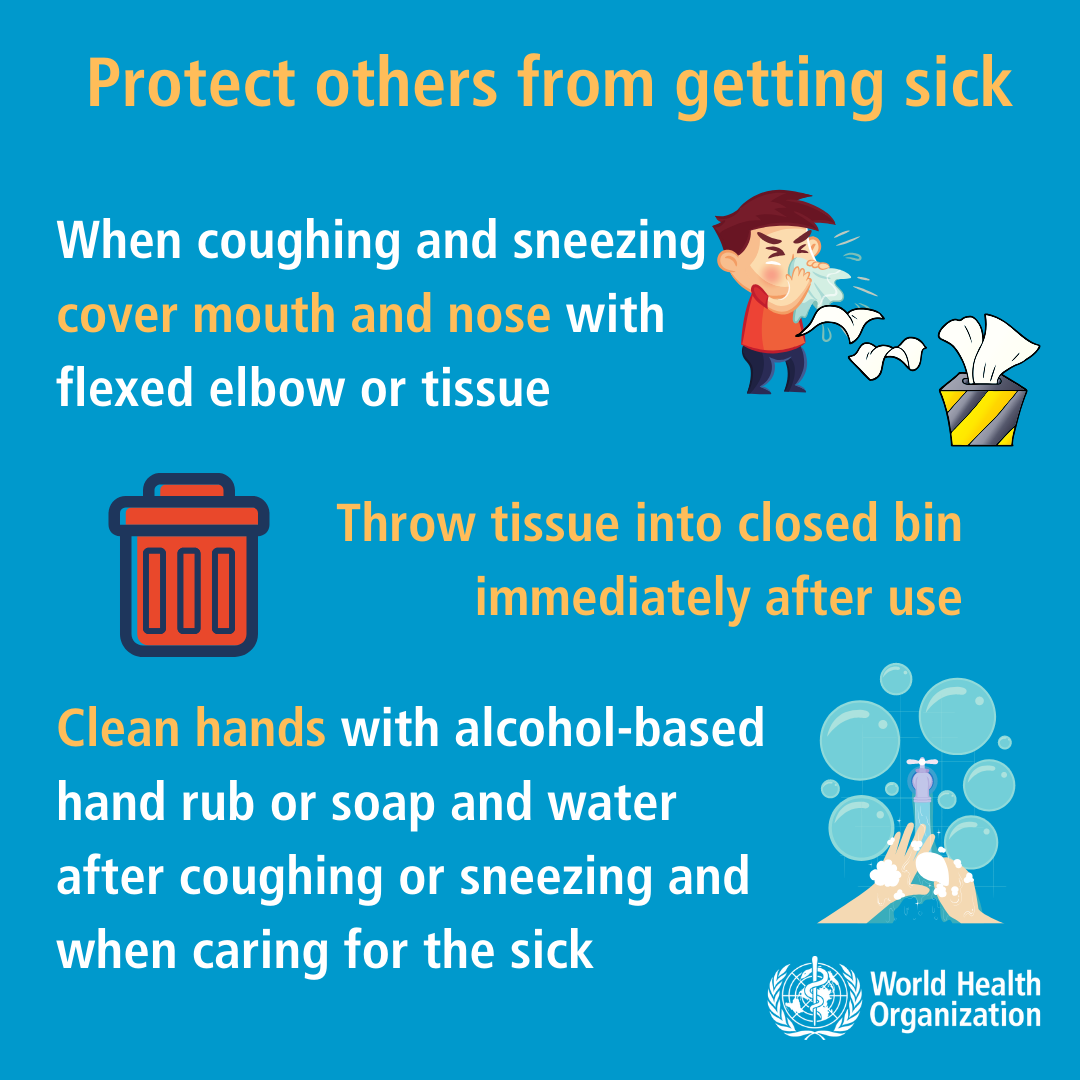|
When do I need a mask?
On 13 Oct 2020 the WHO re-issued its general advice on the use of face masks in the context of COVID-19 based on a thorough understanding of COVID-19 transmission. The WHO's Q&A on masks can be found here.
The WHO recommends that, if COVID-19 is spreading in your community, make wearing a mask a normal part of being around other people.
The WHO updated advice covers recommendations for healthy people, people over 60, people with pre-existing medical conditions that place them at high-risk, people with symptoms of COVID-19, people with suspected or mild COVID-19, caregivers and health care workers. Please read the complete document. Below is an informative summary:
- General public in the community:
- Wear masks where there is widespread transmission and when physical distancing is difficult, such as on public transport, in shops or in other confined or crowded environments.
- The WHO recommends that cloth masks should consist of at least three layers of different materials: an inner layer being an absorbent material like cotton, a middle layer of non-woven materials such as polypropylene (for the filter) and an outer layer, which is a non absorbent material such as a polyester or a polyester blend.
- Whether or not masks are used, maximum compliance with hand hygiene, no face touching and social distancing is critical to prevent human-to-human transmission of COVID-19.

- People who are: caring for somebody with COVID-19; are over 60, have pre-existing medical conditions or; have symptoms of COVID-19 (coughing, sneezing, fever) should:
- Wear a medical mask, self-isolate, and seek medical advice as soon as they start to feel unwell. Symptoms can include fever, fatigue, cough, sore throat, and difficulty breathing. It is important to note that early symptoms for some people infected with COVID-19 may be very mild;
- Follow instructions on how to put on, take off, and dispose of medical masks;
.png)
- Follow all additional preventive measures, in particular, hand hygiene and maintaining physical distance from other persons.



- Persons with suspected COVID-19 or mild COVID-19 should:
- Self-isolate if isolation in a medical facility is not indicated or not possible
- Perform hand hygiene frequently, using an alcohol-based hand rub if hands are not visibly dirty or soap and water when hands are visibly dirty;
- Keep a distance of at least 1 m from other people;
- Wear a medical mask as much as possible; the mask should be changed at least once daily. Persons who cannot tolerate a medical mask should rigorously apply respiratory hygiene (i.e. cover mouth and nose with a disposable paper tissue when coughing or sneezing and dispose of it immediately after use or use a bent elbow procedure and then perform hand hygiene.)
- Avoid contaminating surfaces with saliva, phlegm, or respiratory secretions.
- Improve airflow and ventilation in their living space by opening windows and doors as much as possible.
- Caregivers or those sharing living space with persons suspected of COVID-19 or with mild COVID-19 should:
- Perform hand hygiene frequently, using an alcohol-based hand rub if hands are not visibly dirty or soap and water when hands are visibly dirty;
- Keep a distance of at least 1 meter from the affected person when possible;
- Wear a medical mask when in the same room as the affected person;
- Dispose of any material contaminated with respiratory secretions (disposable tissues) immediately after use and then perform hand hygiene.
- Improve airflow and ventilation in the living space by opening windows as much as possible.
- Persons with symptoms of COVID-19 (coughing, sneezing, fever) visiting a health care setting should:
- Wear a medical mask while waiting in triage or other areas and during transportation within the facility;
- Not wear a medical mask when isolated in a single room, but cover their mouth and nose when coughing or sneezing with disposable paper tissues. Tissues must be disposed of appropriately, and hand hygiene should be performed immediately afterwards.
- Health care workers should:
- Wear a medical mask when entering a room where patients with suspected or confirmed COVID-19 are admitted.
- Use a particulate respirator (n95 mask or better) at least as protective as a US National Institute for Occupational Safety and Health-certified N95, European Union standard FFP2, or equivalent, when performing or working in settings where aerosol-generating procedures, such as tracheal intubation, non-invasive ventilation, tracheotomy, cardiopulmonary resuscitation, manual ventilation before intubation, and bronchoscopy are performed.
- Full infection prevention and control guidance for health care workers is provided here.
[ Back to EBDM Main page ]
Any questions or comments please contact Gordon.Doig@EvidenceBased.net
Privacy Policy
Page last modified on Saturday 6 June 2020.
|


















.png)


